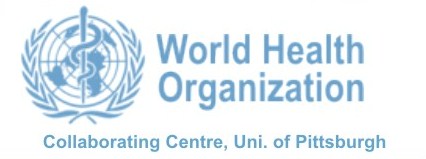Introduction to Research Methods in the Era of the Internet Workshop
Nazarbayev University, Astana, Kazakhstan
Faculty members: Ronald LaPorte, PhD, Janice Dorman, PhD, Thomas Songer, PhD, Faina Linkov, PhD, Eugene Shubnikov, MD, Eugene Tseytlin,MSc, Philip LaFleur, MSc
Organizing committee: A. Sharman , Zh. Zhumadilov, R. Issayeva, Sh. Askarova , Sh. Adambekov
|
Time |
Activity |
Lecture title |
Room |
|
9.00 – 9.50 |
Almaz Sharman |
3.323 |
|
|
10.00 – 10.50
|
Introduction to epidemiology: Epidemiology as a Population Science. Basic Epidemiology Measures |
3.323 |
|
|
11.00 – 11.30 |
Coffee break |
Balcony 4th floor 3rd block |
|
|
11.30 – 13.00 |
|
Types of Studies Commonly Utilized in public health: cohort, case control, cross sectional, observational |
3.323 |
|
13.00 – 14.00 |
Lunch |
Cafeteria 5th block |
|
|
14.00 – 14.50 |
FSU-US collaboration/establishment of bilateral collaboration |
3.323 |
|
|
15.00 – 15.50 |
Computer lab: Free online scientific resources in the area of biostatistics and open source software. EpiInfo, Epidat, Excel. Statistical packages and research, examples of descriptive stats in excel. The videos for some of the software packages |
2.522 |
|
|
16.00 – 16.50 |
Group work: breakout sessions, formulating a hypothesis |
Rooms 3.310, 3.303, 3.328 and 3.330 Generate study design for hypotheses formulated in day 1 |
|
|
17.00 – 18.00 |
Video presentation |
|
3.323 |
Disclaimer: Lectures may not be the exact lectures presented, but some slides were chosen from the Supercourse
www.pitt.edu/~super1This project is made possible by the support of the American people through the United States Agency for International Development (USAID). The contents are the sole responsibility of the University of Pittsburgh and do not necessarily reflect the views of USAID or the United States Government.



